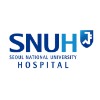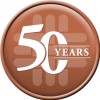
IMPACT- 24col Collateral Blood Flow Assessment Following SPG Stimulation in Acute Ischemic Stroke...
Ischemic StrokeThe purpose of the ImpACT-24col sub-study is to explore effect of SPG stimulation on the augmentation of collateral blood flow and to relate it to the subject's cerebral blood flow status, the extent of the collateral vessel potency prior to the stimulation and the relation of the vessel occlusion site to the vasodilatory effect by using digital subtraction angiography (DSA), the gold standard imaging technique to demonstrate collateral blood flow dynamics. The results of this study will further promote the knowledge towards optimization of SPG stimulation to treat acute ischemic stroke patients.

Hyperglycemia in Patients With Stroke and Indication of Enteral Nutrition
Hyperglycaemia (Non Diabetic)Enteral Feeding Intolerance1 moreThe purpose of this study is to evaluate the effect of a specific nutritional formula for diabetics on the development of hyperglycemia in patients with recent non-diabetic stroke who require admission and enteral nutritional support by nasogastric tube. As well as the effect on metabolic control, development of comorbidities, hospital stay, readmissions, mortality and tolerance of the formula under study.

Efficacy and Safety of AngongNiuhuang Pill for the Treatment of Patients With Acute Ischemic Stroke....
Acute Ischemic StrokeAngongNiuhuang pill has obvious effects on the cardiovascular and cerebrovascular, especially the cerebral vessels. Pharmacological experiments confirmed that AngongNiuhuang pill can protect blood-brain barrier, reduce capillary permeability, improve the tolerance of cerebral ischemia and hypoxia, improve oxidative stress injury, thus protecting brain tissue. Clinical studies have also confirmed that AngongNiuhuang pill can increase the GCS score, reduce coma, improve nerve function defect and promote nerve function recovery. The primary purpose of this trial was to evaluate the effect of AngongNiuhuang pill and placebo on the improvement of life function in patients with ischemic stroke at 90 days in acute phase.

A Clinical Study of iNSC Intervent Cerebral Hemorrhagic Stroke
StrokeIschemicThis is a single centre、single arm、open-label,to investigate the safety and efficacy of induction of neural stem cells transplantation in the brain

TCM Clinical Practice Rehabilitation of Post-stroke Spasticity
StrokeThe purpose of this study is to determine the effectiveness,safety and Input-output ratio of chinese traditional treatment in spasm after stroke,both in massage and herbal medicine bathing.

Remote Ischemic Conditioning Paired With Endovascular Treatment for Acute Ischemic Stroke
Acute StrokeIschemic stroke, which is due to the occlusion of a cerebral blood vessel, comprises nearly 80-90% of all strokes. Currently, reperfusion of the salvageable tissue via thrombolytic drug or endovascular treatment is the most effective strategy to reduce brain damage. However, after recanalizing the occluded vessels, subsequent reperfusion injury is inevitable. It may not only weaken the therapeutic effects of timely reperfusion but also impede patients' recovery. Moreover, thousands of neuroprotective drugs effective in experimental models have been proved to be unsuccessful in clinical trials. Therefore, effective strategies are urgently needed to prevent and treat cerebral reperfusion injury and further improve the prognosis of acute ischemic stroke. Researchers applied remote ischemic conditioning to mouse model of focal cerebral reperfusion injury and found that it could reduce cerebral infarct size. And clinical researches demonstrated that remote ischemic conditioning was an effective strategy to improve cerebral perfusion and prevent recurrent stroke in patients with ischemic stroke. However, whether remote ischemic conditioning is safe and effective in protecting patients with large-vessel ischemic stroke and undergoing endovascular treatment is still unclear. The investigators' hypothesis is that RIC is a safe and effective strategy to reduce brain injuries in stroke patients undergoing endovascular treatment.

Mild Hypothermia After Endovascular Treatment in Acute Ischemic Stroke
Ischemic StrokeThrombolytic TherapyTo study safety and feasibility of mild therapeutic hypothermia after successful recanalization by mechanical endovascular treatment in patients with acute ischemic stroke and proximal arterial occlusion.

Detection of Area of Ischemia in Patients With Subacute Stroke Via a Hybrid EEG-fNIRS Brain-computer...
StrokeThe purpose of this research study is to determine whether a combined electroencephalography (EEG) and functional near infrared spectroscopy (fNIRS) recording is able to detect changes in brain activity and blood flow after stroke.

The Effects of Functional Action-Observation Training on Gait Ability in Patients With Chronic Stroke...
StrokeThis study aimed to examine the effects of functional action observation training on gait ability in chronic stroke patients.

Enhanced Reality for Hemiparetic Arm in the Stroke Patients
StrokeParesis1 moreThe researchers found that enhanced reality developed for the first time in the word by us had a synergistic or additive effect on brain plasticity in patients without central nervous system injury. The aim of this study is to determine the validity and feasibility of enhanced reality in hemiparetic arm in the stroke patients with central nervous system injury.
